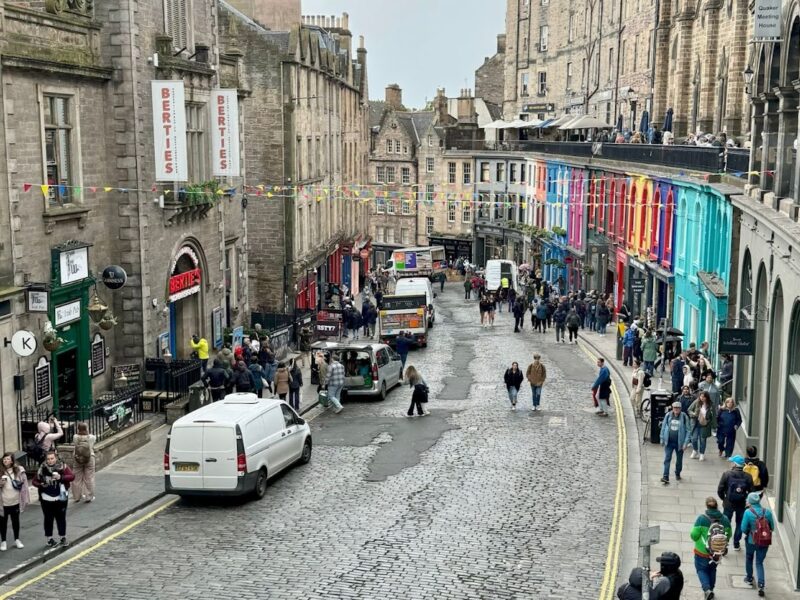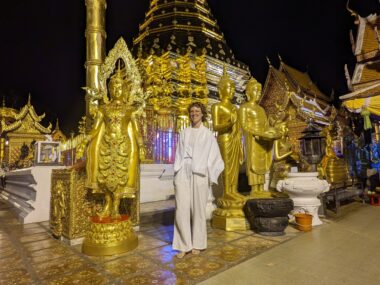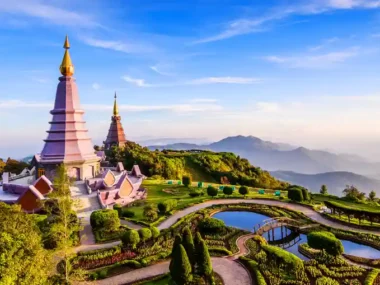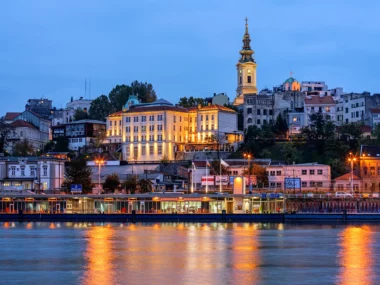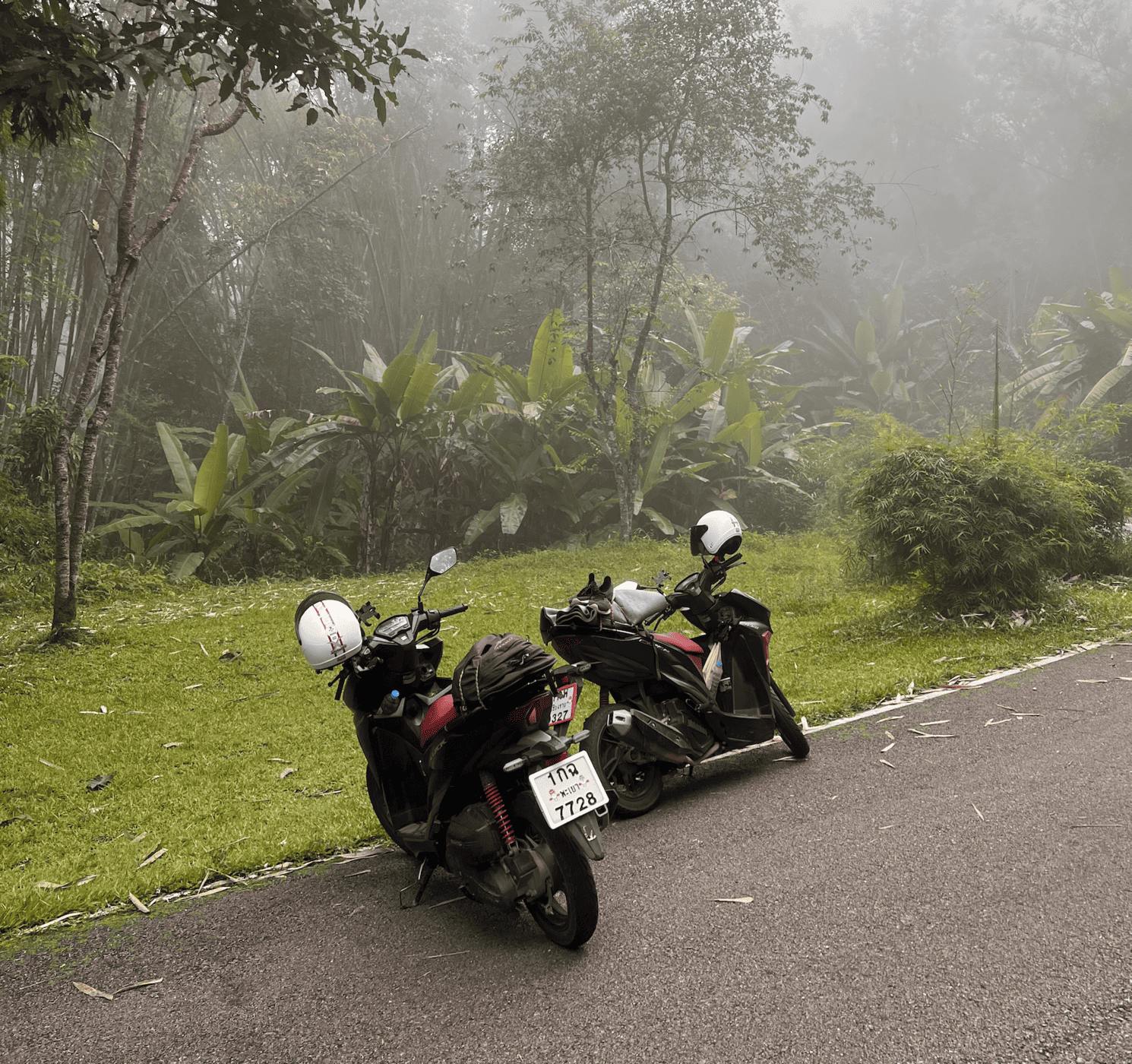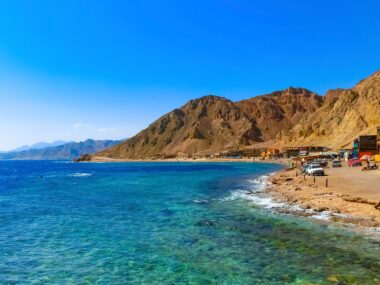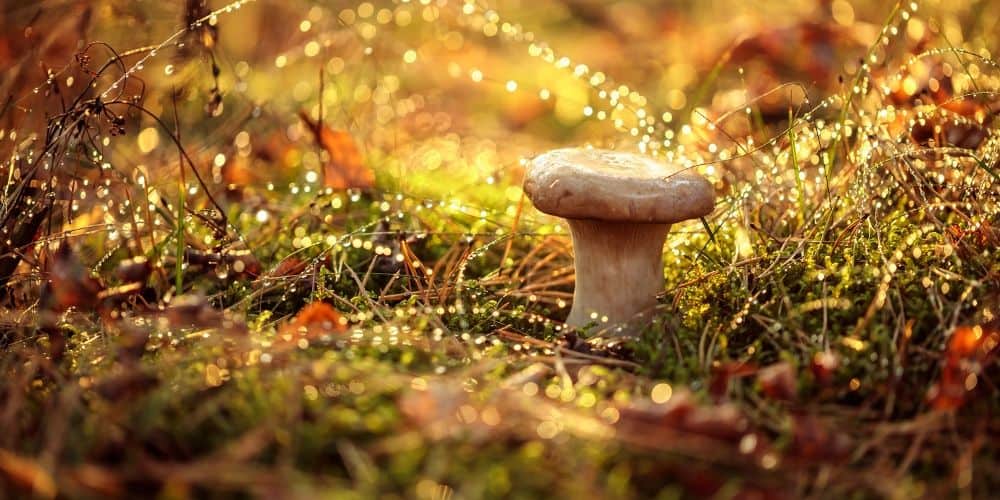Table of Contents
When my wife asked if I’d go with her to a Taylor Swift concert, my answer was a firm no. She negotiated: what if I came on the trip, but she went to the concert with my sister instead? Apparently, I agreed — then forgot about it entirely. Months later, I found myself asking, “Wait, we’re going where?” To Edinburgh. “Why are we going there?” Because, somehow, concert tickets in Edinburgh were cheaper than in the U.S., even after factoring in flights and hotels. “I said yes to this?” I did — on the condition that I wouldn’t have to plan a thing.
That’s how I ended up spending a week in Edinburgh, Scotland. Over a year later, it’s still a trip that stands out in my memory. I was never especially drawn to the U.K. — London never quite called to me, but Edinburgh was different.
Accommodations: Eden Locke, Edinburgh
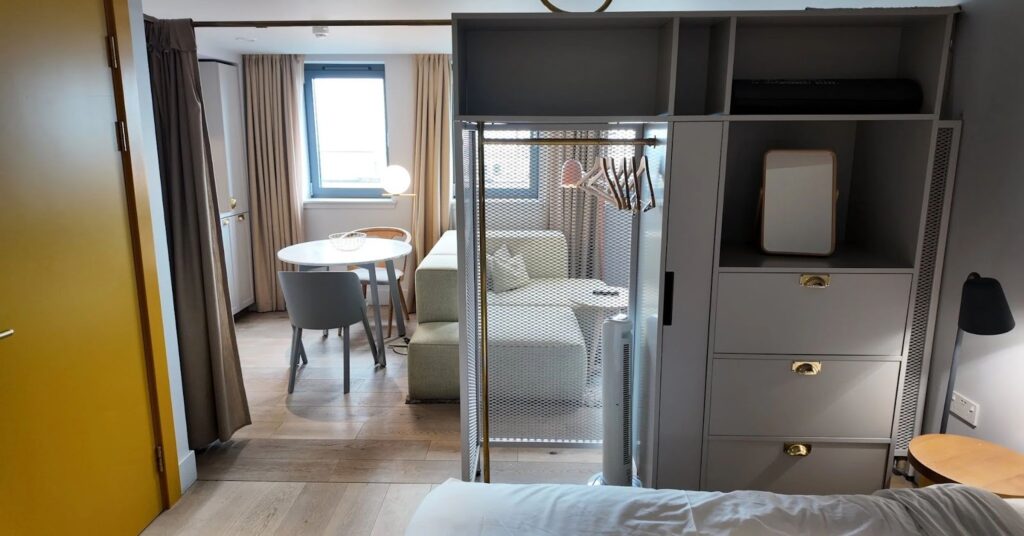
Eden Locke is a 15 to 20-minute walk from Haymarket Station, then another 25-minute train ride from Edinburgh Airport. I made the jaunt sleep-deprived, having not slept on the plane, and didn’t know we’d only be dropping off our bags until our rooms became available in the latter half of the afternoon. We went to the nearest Starbucks where I downed some caffeine. I spent the morning into the afternoon wandering the streets in a daze like a dog, going wherever the women in my life called me, until our rooms finally opened up and I could pass out.
When I woke up the next morning, I opened up Google Maps to get a proper understanding of where I was. After that, I took a look around our room and gave it the attention I didn’t have the day before. With those two things, I realized: Oh, this is nice. There’s a washing machine in our room, and it smells like a mixture of lavender and vanilla from nowhere in particular.
We’re within walking distance of Edinburgh Castle and Holyrood Park, the home of Arthur’s Seat. The front of the hotel, Mayvn Cafe, is effectively half a co-working space, so I don’t need to go far for those rare instances when I’m feeling social. I’m sure it cost more than I would feel comfortable paying (spoiler alert: it does), but experiences like these are making me a believer in paying a little more for convenience.
That morning, I walked to a nearby grocery store, a chain called Sainsbury Local, and picked up the staples my sister and I had both learned to grab from our time as kids in the military: Bread, peanut butter, jelly, milk, and Frosted Flakes. On the way back, I got a little lost and ended up passing by the Starbucks we had visited the day before, and that time fully appreciated how cool of a spot it is.
Co-working: Starbucks Coffee on Princes Street, Edinburgh
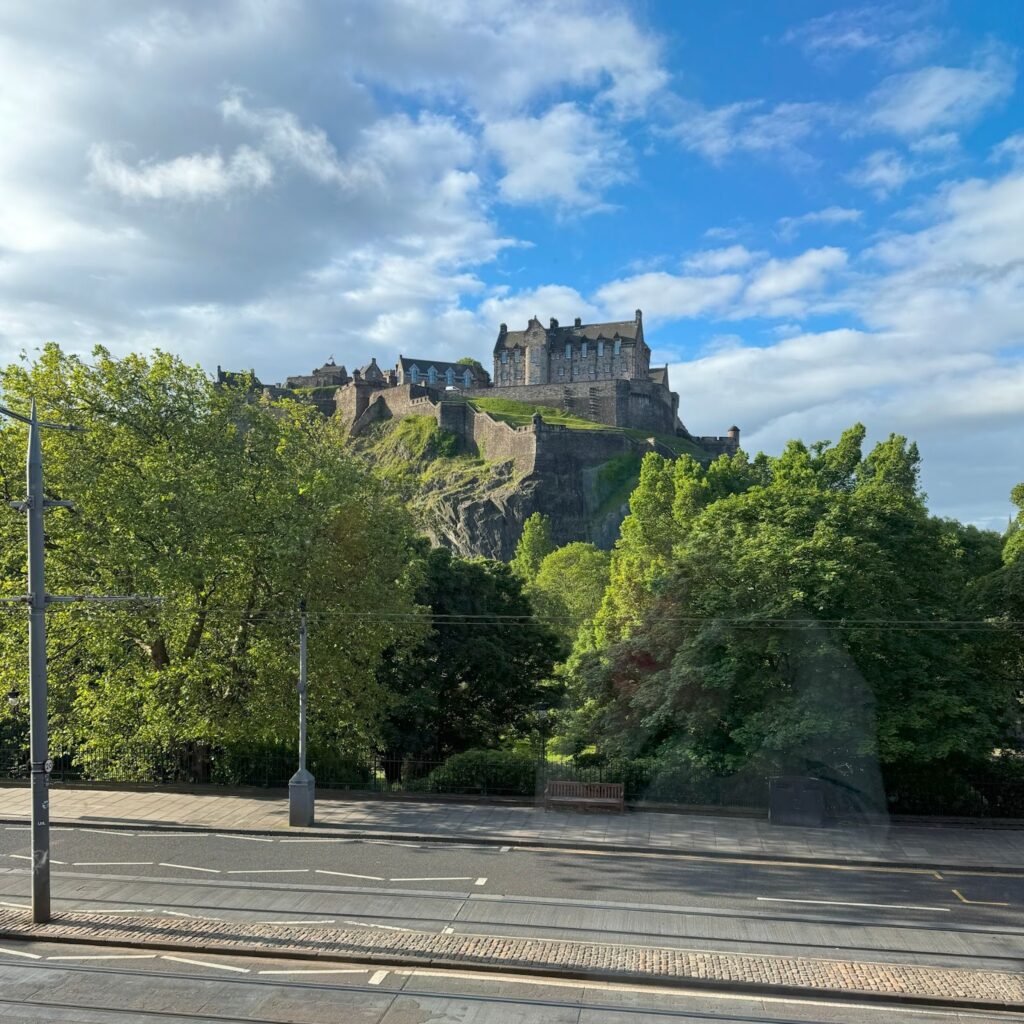
The Starbucks at the corner of Princes Street and Castle Street is big. It has two floors, with the upper level being an ideal place for remote workers to ignore their laptops and stare out the large bay windows at Edinburgh Castle. That’s what people did — resident businessmen and women, a few college students, and obvious travelers, all with considerate spacing between each other. It’s a beautiful old building that blends history with franchise predictability the way digital nomads want but won’t say. The internet is fast, the location is convenient, and it’s roomy enough to take video calls without problematic background noise.
I admired all of this, but still chose to go back and work in the hotel room. At this point in my life, I prefer stationary workstations, even if it’s a dining table, so I don’t have to pack up when I’m done. I’d rather take breaks to appreciate the picturesque environments than work uncomfortably in them. But if I were 10 years younger with the money I have now, I’d set up shop there every day.
I spent the rest of the day, and the next, and every weekday after, working from the hotel room. I slept in, then worked late to accommodate U.K. business hours. Since it was summer it didn’t get dark until 11:00 p.m., and even then it never got dark enough to feel like a proper night. A few times I snuck out to Mayvn Cafe for a slice of carrot cake, then after seeing how busy the co-working area was, quietly went back to my room.
Japanese Food in Edinburgh: HAKATA-YA
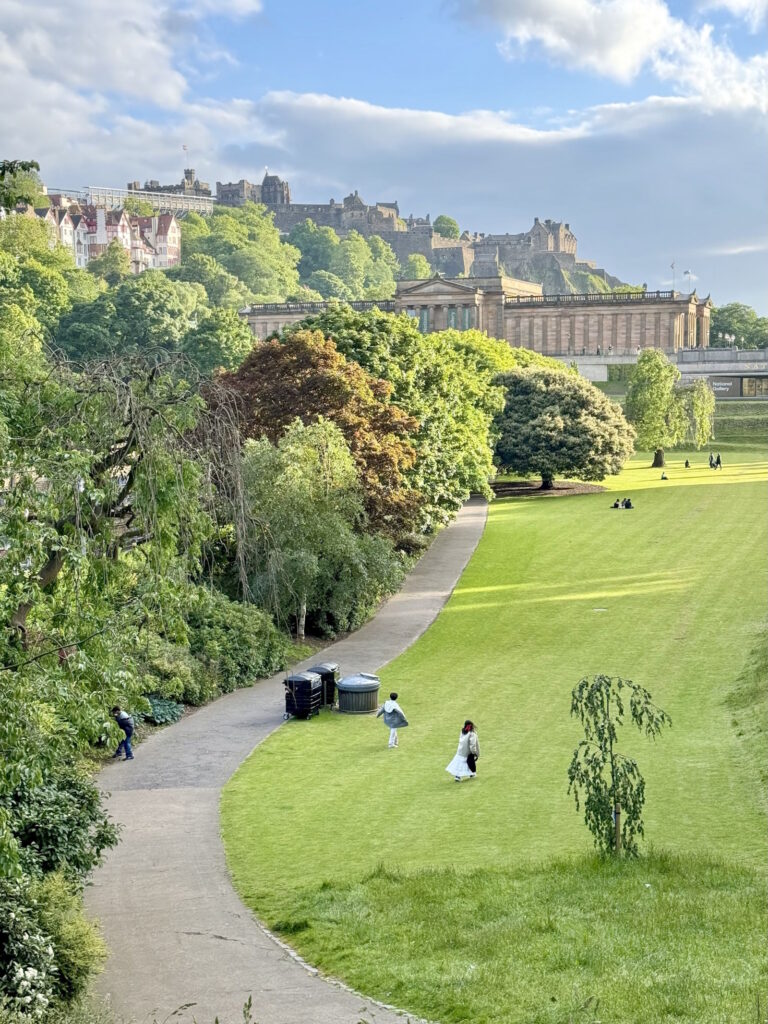
Throughout the week, for lunches and diners we would all pick and try out a new place for each meal, and I have to say… the food is generally uneventful. For what it’s worth, I never tried haggis, nor am I a foodie, but most of what we ate relied on the same salt and carbs I’m used to back home in Iowa.
The best food I ate was actually Japanese. It was tonkatsu ramen at HAKATA-YA, less than one block away from Eden Locke. Hakata refers to the Fukuoka region in Japan where the style of ramen originates. It’s also where the chef and owner trained. It’s a special type of ramen with milky broth based on pork bones, and while I know I just dumped on the rest of the food for being salt and carbs, this is good salt and carbs, not your basic french fry.
In true Japanese ramen house style, it’s a small restaurant, so I’d recommend calling ahead for a reservation like we did.
Somewhere between the castle views and the late-night pub chatter in Edinburgh, I started jotting notes, those small details you think you’ll remember forever but never do. I’ve been collecting them ever since, little travel fragments and life lessons you can peek at here.
Saturday: Arthur’s Seat in Scotland
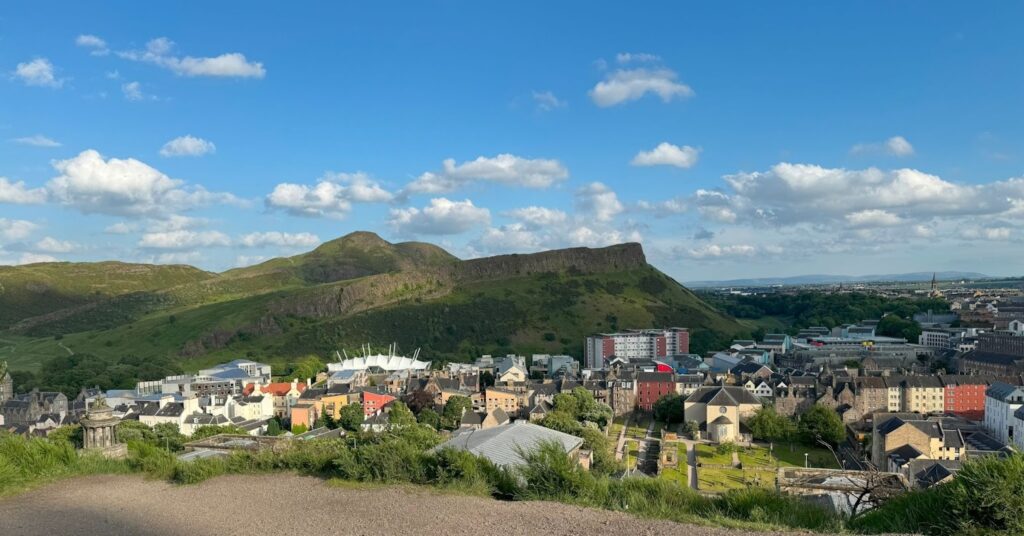
On Saturday we climbed Arthur’s Seat in Holyrood Park, which, after multiple 20,000+ step days, my sister politely declined. It’s a hard hike to describe — people call it a hill, not a mountain, but it’s a big hill. My wife and I both typically walk a minimum of three miles per day, so walking there from Eden Locke was no problem, but the terrain gets rocky at the top.
The view from the top is great, and I felt just as much a sense of achievement as some of the small mountains I’ve climbed. If you want the classic “picture from behind on a mountain top looking out over a distant landscape”, there are plenty of opportunities (and other people snapping them too). I know a lot of digital nomads pride themselves on avoiding the tourist attractions, but I enjoyed this one and would do it again.
Sunday: Rabbies Tour (Glencoe & Loch Ness)
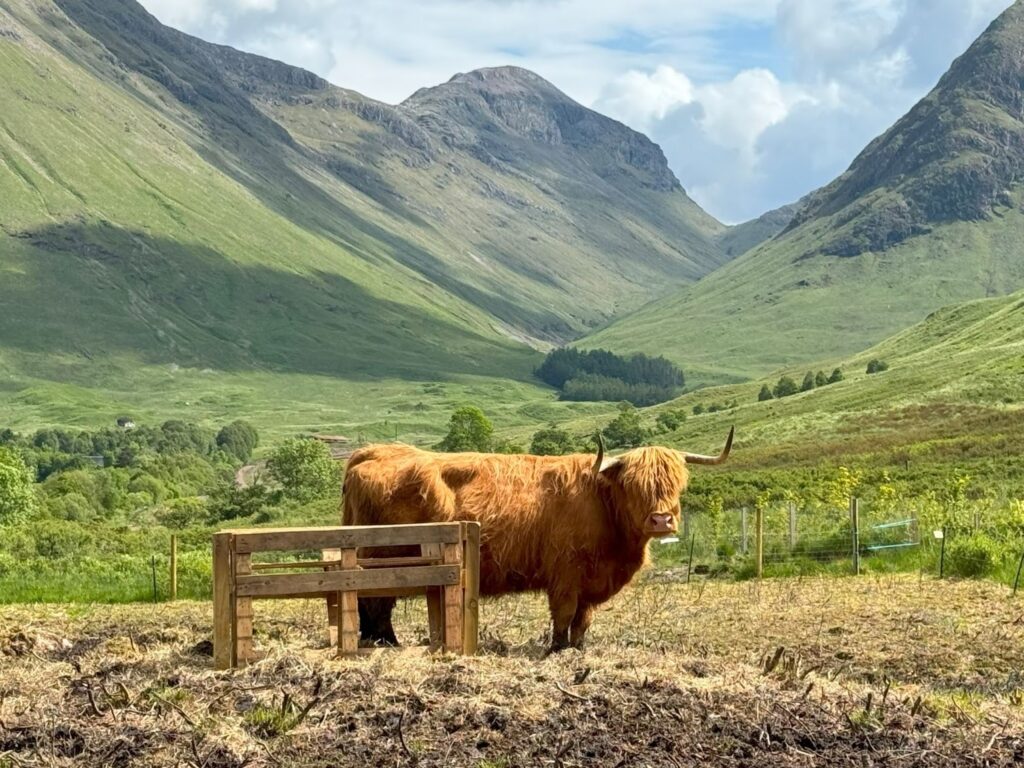
On our last day, we hopped on a bus tour by the guys at Rabbies to see more of Scotland. While I could talk about each of the places we stopped, two especially stand out: Glencoe and Loch Ness.
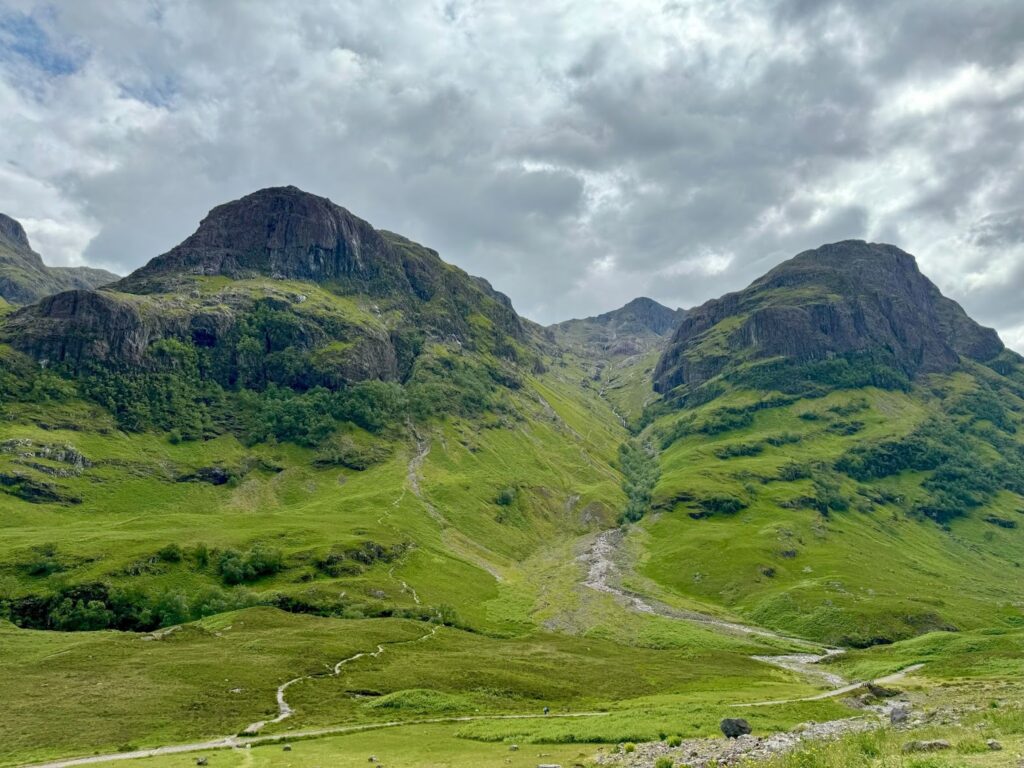
Glencoe is to How to Train Your Dragon what New Zealand is to The Lord of the Rings — it makes the setting of a fictional story real. Glencoe is green, and rocky, and waterfalls, and simultaneously both cozy and hostile. The sound of rushing water and every shade of moss, heather, and shrub you’ve ever seen overwhelm your senses, tricking you into believing it’s a hospitable environment, then you get hit with a huge gust of wind and realize there is not a sizeable tree in sight. This is why dragons always eat people in stories. What else are they supposed to eat in a place this rugged?
Still, it’s the kind of place you dream of going to get away from other people. Even if you do like people, you should still go to see views you’ll never see anywhere else. You can’t take a bad picture; point your phone in any direction.
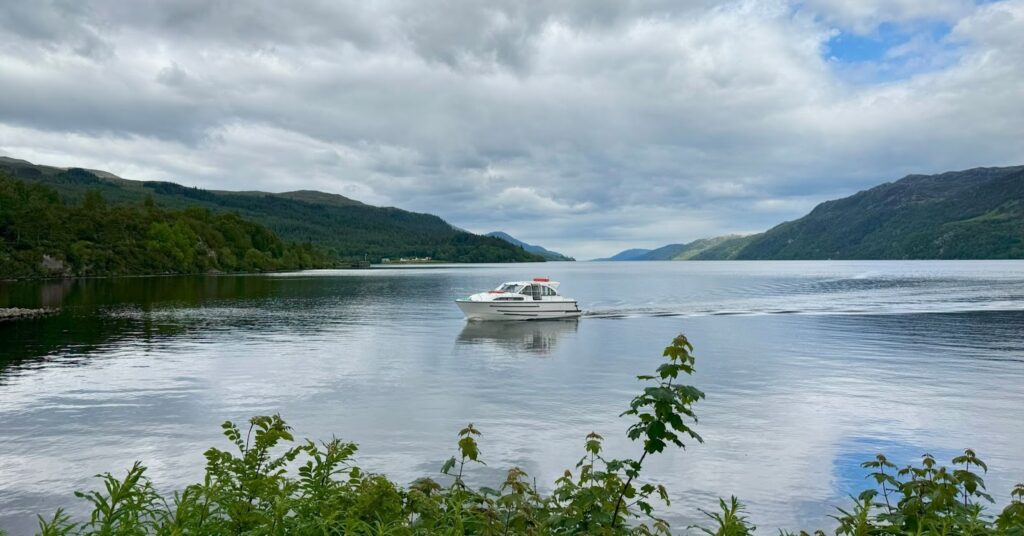
As for Loch Ness, it’s more than childhood me ever expected it to be. I spent an unhealthy amount of time thinking about the Loch Ness monster when I was a kid. In college, I wrote a persuasive essay about why Nessie is real. I figured nobody in the world was into Nessy as much as me, then I went to Fort Augustus and found my people.
There’s a plant in the shape of Nessie. At the Caledonian Canal Center, there are fridge magnets, books, plushies — all pimping out Nessie. The shops on both sides of the canal sell Nessie swag like their lives depend on it (they kind of do). I felt validated knowing I wasn’t alone in my Nessie fandom.
Thoughts While Leaving Edinburgh
On the plane ride home the next day, I processed thoughts I had never had. In 2019, I was fully prepped to become a stereotypical digital nomad with no home base. I wanted to see the world, the whole world, like so many nomads do. Then COVID hit and borders closed, so I changed my trajectory — I went back to college and learned Japanese while building a bigger business. I gave up on the infinite travel dream to double down on Japan, but by doing so ironically created a stronger foundation for it.
Now, I generally visit a dozen new cities or so each year. Edinburgh was the first place where I thought, “If I never make it long-term to Japan and end up here instead, I’d be okay with that.” The people and vibe remind me of home.
What’s the best time of year to visit Edinburgh?
Late spring through early autumn (May–September) offers long daylight hours, mild weather, and lively city energy. Summer is ideal for hiking Arthur’s Seat or exploring the Old Town on foot.
Is Edinburgh a good destination for digital nomads?
Yes. The city’s walkability, fast Wi-Fi, and cozy cafés like Starbucks on Princes Street make it great for remote work. Many visitors appreciate the balance between old-world charm and modern convenience.
How many days do you need to explore Edinburgh properly?
Four to five days are perfect for covering key attractions: Edinburgh Castle, Holyrood Park, Arthur’s Seat, and local food spots — with an optional day trip to Glencoe or Loch Ness.
What makes Edinburgh different from London or other U.K. cities?
Edinburgh feels smaller, calmer, and more personal. It blends historic architecture with a creative, local vibe that many travelers find more soulful than London’s fast pace.

